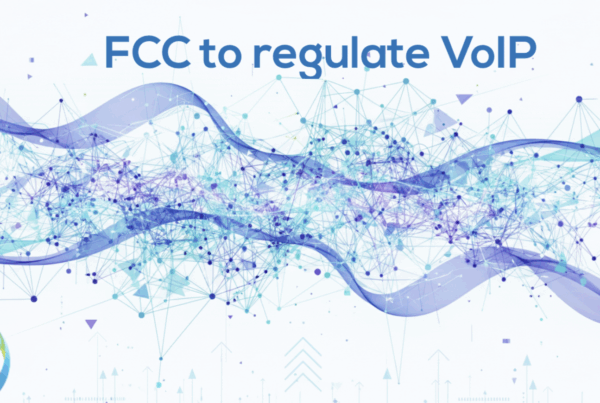Australia is moving closer to implementing its national SMS Sender ID Register – a key step in protecting consumers from scams and restoring trust in text messaging. Stefano Nicoletti, Head of MEF’s Sender ID Registry in the UK discusses how, as preparations advance, businesses are urged to act early and ensure compliance with the new requirements.
Australia is preparing to roll out its SMS Sender ID Register in 2026, 3 years after its first announcement intention to establish an SMS Sender ID Register on 23 April 2023. The registry is set to become mandatory from 1 July 2026. The initiative, led by the Australian Communications and Media Authority (ACMA), is designed to protect consumers from impersonation scams by requiring businesses to register their alphanumeric sender IDs.
While the register is widely welcomed as a step toward restoring trust in SMS communications, it has also sparked concern across the telecommunications and business sectors. As the implementation date approaches, it’s worth examining both the benefits and the potential pitfalls of this new regime.
What Is the SMS Sender ID Register?
The register will require all organisations using alphanumeric sender IDs to verify and register them through participating telcos or electronic messaging service providers (EMSPs). From 1 July 2026, any unregistered sender ID will be replaced with the label “Unverified”, and messages may be blocked or grouped into a separate thread on mobile devices—effectively warning users of potential scams.
As with any regulatory shift, the devil is in the details. Businesses must stay informed, act early, and advocate for clarity where needed. The next few months will be critical—not just for compliance, but for shaping the future of secure digital messaging in Australia.“
As we have already commented in previous blogs regarding the Irish regulator implementation of a similar registry, the introduction of similar labelling has caused genuine messages to be blocked, also it caused some confusion among users, creating an opportunity for scammers to step up their game and charge on with fresh attacks.
The new rules will apply to all telcos operating in Australia, including those transiting or terminating SMS/MMS traffic. Applications to participate in the register open 15 October 2025, and telcos must begin notifying customers by 30 November 2025.
What Businesses Should Do Now
With the first deadline approaching on 15 October 2025, businesses should begin preparing:
- Audit Sender IDs: Identify all alphanumeric sender IDs currently in use.
- Engage with Telcos: Confirm whether your provider is participating and understand their registration process.
- Review Legal and Privacy Compliance: Ensure your messaging practices align with the Spam Act 2003 and privacy regulations.
- Educate Internal Teams: Marketing, IT, and compliance teams should be briefed on the new requirements.
- Communicate with Customers: Prepare messaging to explain any changes in sender ID appearance or message delivery.
The Case for the Register
SMS scams are growing, as they are on other communication channels as well. Attackers have become increasingly sophisticated, often impersonate trusted brands, tricking recipients into clicking malicious links or divulging personal information.
The register aims to disrupt this tactic by ensuring only verified entities can use branded sender IDs. ACMA Chair Nerida O’Loughlin has described the register as a “critical call to action” to restore consumer confidence in SMS communications. Consumer advocacy groups like ACCAN have also endorsed the initiative, calling for robust enforcement and tighter controls to prevent misuse of sender IDs.
Concerns from Industry
Despite its good intentions, the register has raised concerns:
- Impact on International Messaging
Initial drafts of the regulation would have blocked messages from overseas entities unable to register, even if they were legitimate. This posed a “significant potential barrier” to participation for global businesses and cross-border service providers. ACMA has since revised the rules to allow international entities to register via certified telcos, but questions remain about how seamless this process will be.
- Operational Complexity
Businesses must now audit all sender IDs, verify their legitimacy, and work with telcos to register them. For large organisations with multiple brands or departments, this could be a resource-intensive process. Smaller businesses and not-for-profits may struggle with the administrative burden, especially if they rely on third-party messaging platforms.
- Risk of Message Disruption
As mentioned above, messages from unregistered sender IDs will be flagged as “Unverified” in some cases. This could lead to legitimate messages being ignored or blocked, damaging customer trust and disrupting service delivery.
- Time and Agility
The Australian Government first announced its intention to establish the SMS Sender ID Register in April 2023, and if all goes according to plan, the system will be fully operational by July 2026—a timeline spanning more than three years. While long lead times are not uncommon with regulatory changes, especially when balancing stakeholder input and technical complexity, this extended rollout does raise questions about responsiveness in the face of fast-moving threats.
Fraudsters are known for their agility. They adapt quickly, shifting tactics as soon as one avenue becomes less effective—often in a “whack-a-mole” fashion. In this context, the concern is whether static, mandatory registries—however well-intentioned—can keep pace with such dynamic and evolving fraud landscapes.
The challenge for regulators is not just to build robust systems, but to ensure they remain flexible and responsive. As fraud tactics evolve, so too must the tools designed to counter them. Whether the SMS Sender ID Register can meet that challenge remains to be seen.
Looking Ahead
The SMS Sender ID Register success will depend on how well ACMA balances security with usability, and how smoothly businesses can navigate the registration process.
As with any regulatory shift, the devil is in the details. Businesses must stay informed, act early, and advocate for clarity where needed. The next few months will be critical—not just for compliance, but for shaping the future of secure digital messaging in Australia.
For businesses, the message is clear: prepare early, engage with your telco, and ensure your sender IDs are registered. By doing so, you’ll not only comply with the new rules—you’ll help build a safer, more trustworthy digital environment for all Australians.






